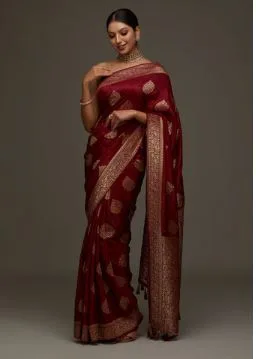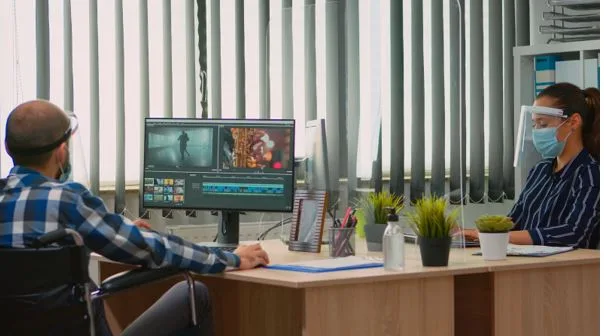The Royal Revival: Banarasi Silk Sarees and Designer Sarees Reclaim the Spotlight
In the world of Indian ethnic fashion, few garments command as much admiration as the saree. Over centuries, it has evolved — from being a symbol of tradition to a statement of personal style. Among the many variations, two continue to define sophistication in their own distinct ways: the timeless banarasi silk saree and the ever-evolving designer saree.
While one carries the essence of centuries-old craftsmanship, the other celebrates modern creativity and innovation. Together, they represent the perfect blend of heritage and haute couture.
Banarasi Silk Sarees: Woven Stories of Tradition
The banarasi silk saree has long been a symbol of Indian luxury. Originating from the holy city of Varanasi, these sarees are handwoven with intricate motifs, zari work, and rich silk threads — every piece a masterpiece that can take weeks, sometimes months, to complete.
Historically, they were the choice of royalty, often woven with real gold and silver threads. Today, the Banarasi weave continues to hold its place as one of India’s finest textiles, admired not just for its craftsmanship but also for its regal charm.
What makes the Banarasi saree truly special is its ability to transcend generations. A bride wearing her mother’s or grandmother’s Banarasi isn’t just donning fabric — she’s carrying forward a legacy. The saree’s heavy borders, Mughal-inspired floral patterns, and intricate butas have stood the test of time, proving that true elegance never fades.
Style Insight:
Modern versions of Banarasi silk sarees are lighter and more versatile. Pair a traditional red or gold Banarasi with antique jewelry for weddings, or go for contemporary hues like sage green, powder blue, or blush pink for festive events. A sleek bun, minimal makeup, and a confident drape can turn this centuries-old attire into a powerful fashion statement.
Designer Sarees: Reinventing Tradition with a Modern Twist
If the Banarasi saree represents heritage, the designer saree stands for innovation. Over the past decade, designer sarees have transformed Indian ethnic wear by infusing creativity into every fold — reimagining fabrics, drapes, and embellishments to suit modern sensibilities.
From pre-stitched versions that make draping effortless to fusion sarees that combine Indian embroidery with Western silhouettes, designer sarees reflect the evolution of Indian fashion. Think ruffles, cape blouses, sequins, feathers, and unconventional fabrics like organza or chiffon — every detail designed to make a statement.
Top designers and influencers are also championing sustainability by reviving traditional handlooms and reworking them with contemporary aesthetics. It’s no longer just about glamour; it’s about thoughtful craftsmanship that honors the past while embracing the future.
Style Insight:
When selecting a designer saree, consider the occasion and the overall vibe. For cocktail nights or receptions, metallics and sequins add instant drama. For formal or daytime events, pastel organza or georgette sarees with delicate embroidery offer understated elegance. A well-tailored blouse can elevate even the simplest design, so never underestimate the power of a perfect fit.
The Harmony of Heritage and Modernity
The renewed popularity of both banarasi silk sarees and designer sarees reflects a larger movement in Indian fashion — one that values tradition while embracing innovation. Women today no longer see ethnic wear as occasional; it’s an extension of their identity, a blend of culture and confidence.
The saree, in all its forms, continues to evolve — but its essence remains unchanged. Whether it’s the handwoven charm of a Banarasi silk or the experimental spirit of a designer creation, both speak the same language: elegance with meaning.
In an age of fleeting trends, these sarees remind us that true style is timeless — not because it follows fashion, but because it creates it.





